Abstract
Changes in respiratory function (FEV1) and polymorphonuclear neutrophils (PMN) on nasal epithelium were studied in 68 students and 39 cotton mill workers in an experimental cardroom. The exposure was characterised by the vertical elutriator dust and endotoxin levels. A dose related decrease was found for FEV1 which was more pronounced in smoking workers. The thresholds for no FEV1 reaction were 0.58 mg/m3 dust and 0.17 micrograms/m3 endotoxin for students and 0.43 mg/m3 and 0.08 micrograms/m3 for smoking workers. The PMN increased in most of the experiments but no dose response relationship could be shown. In experiments with smoking workers or when washed cotton was carded a better correlation was obtained between FEV1 decrease and endotoxin levels than for dust levels.
Full text
PDF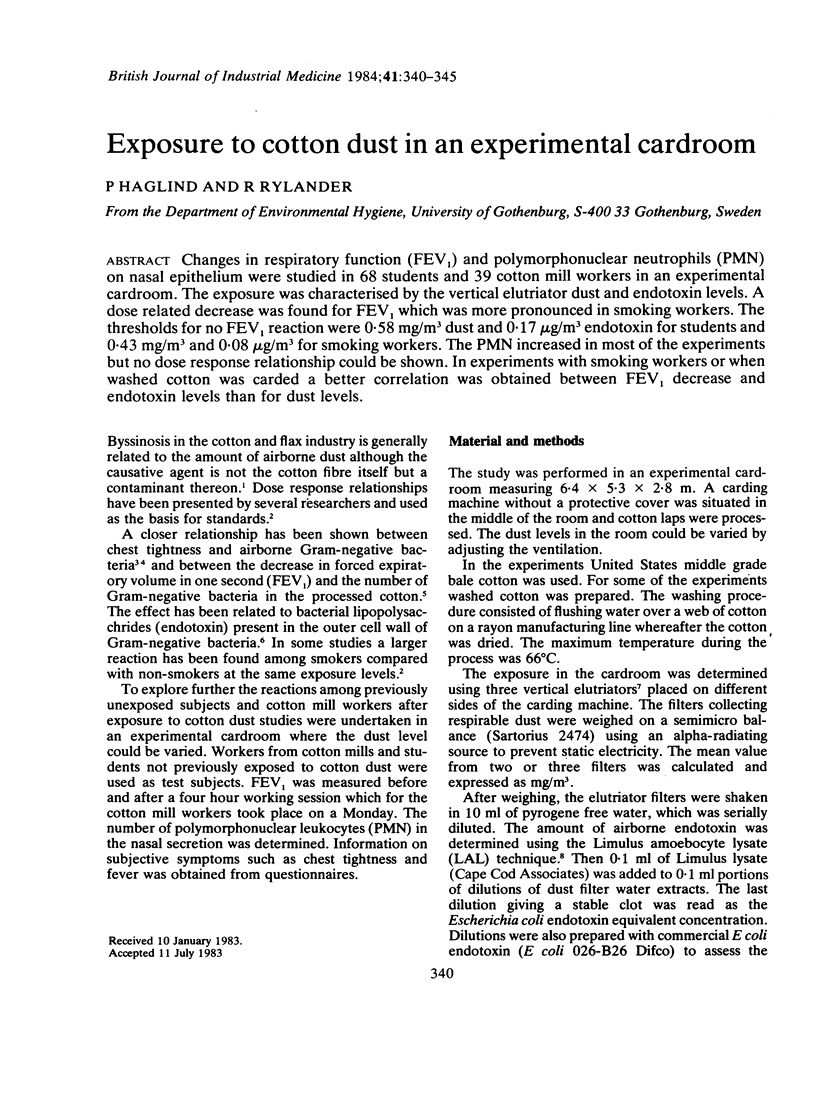
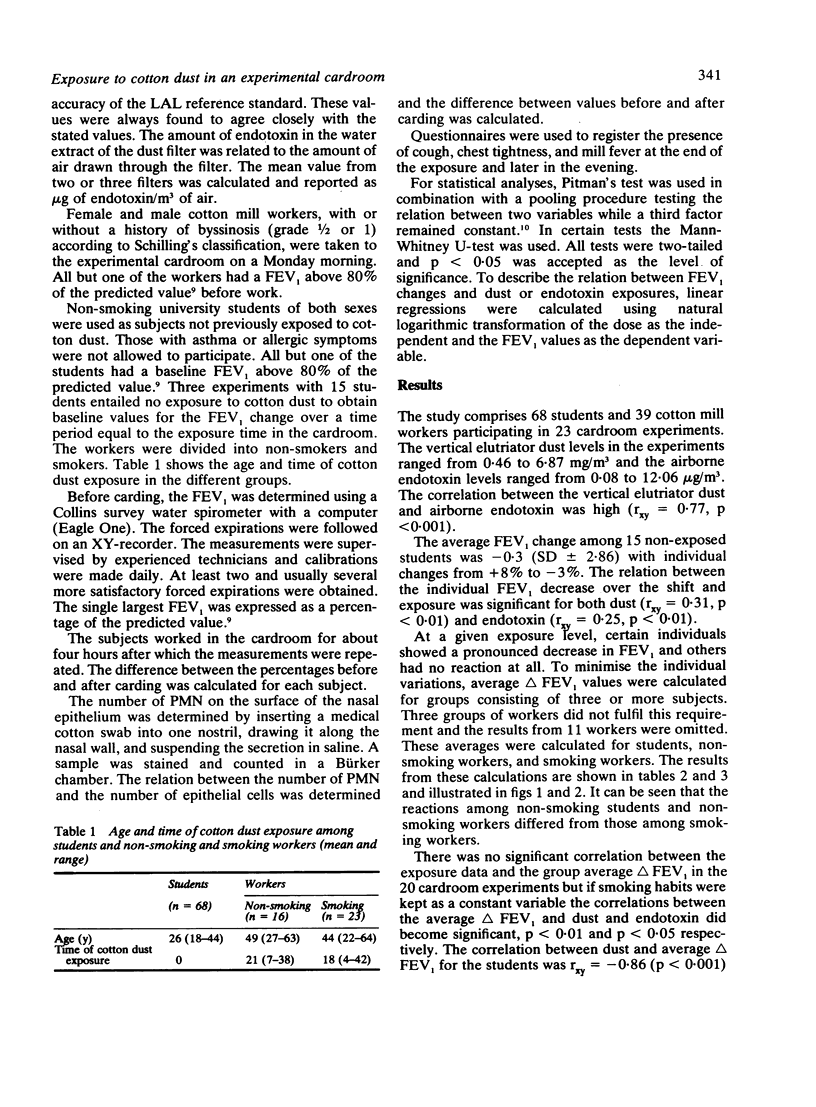
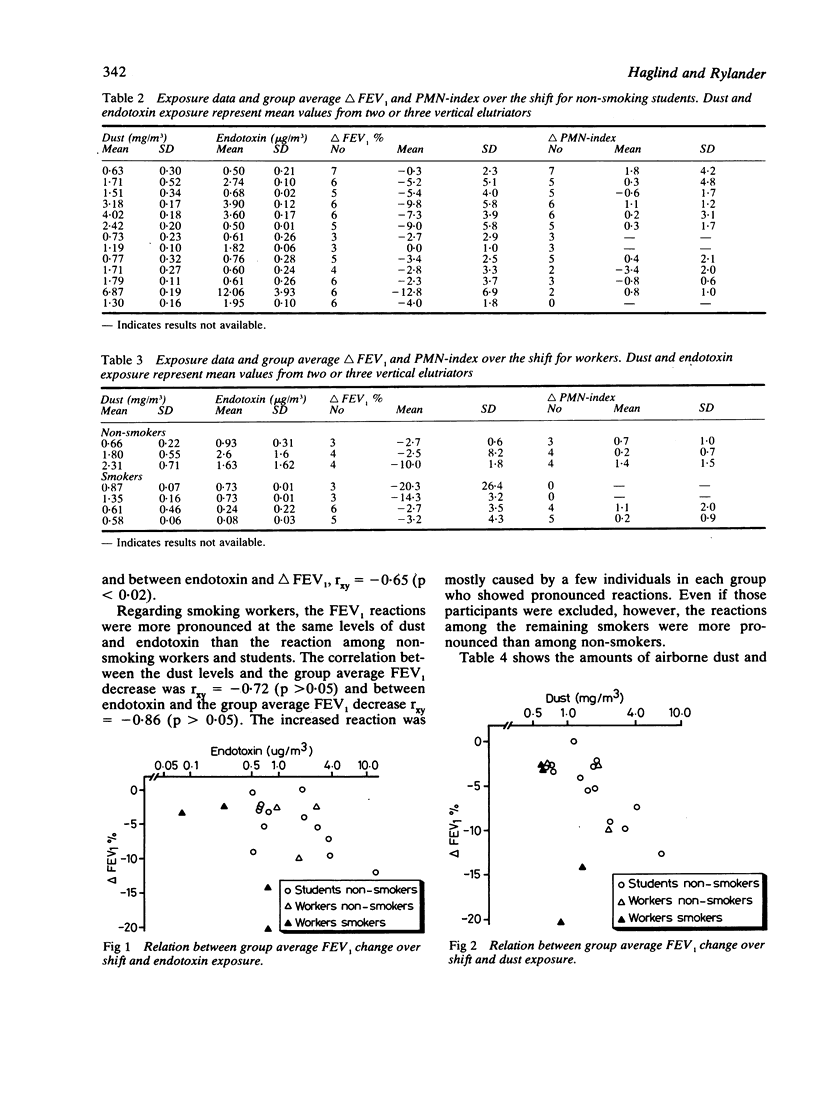
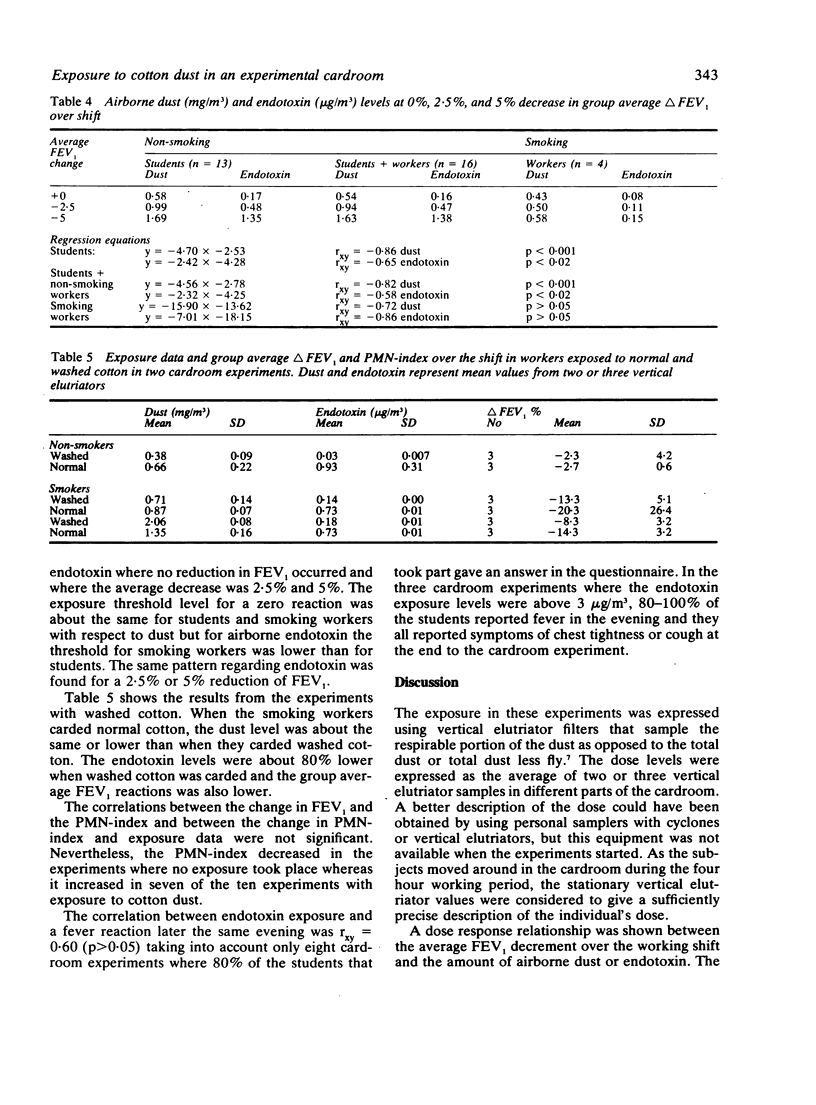

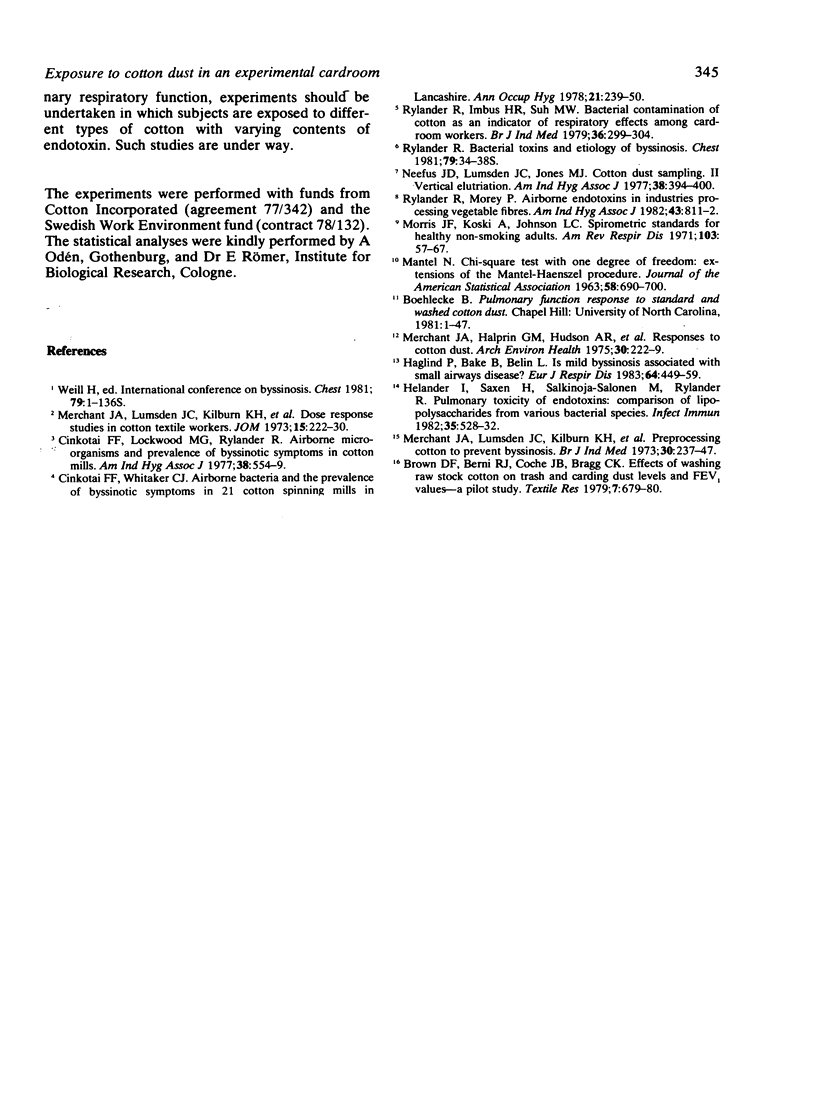
Selected References
These references are in PubMed. This may not be the complete list of references from this article.
- Cinkotai F. F., Lockwood M. G., Rylander R. Airborne micro-organisms and prevalence of byssinotic symptoms in cotton mills. Am Ind Hyg Assoc J. 1977 Oct;38(10):554–559. doi: 10.1080/0002889778507669. [DOI] [PubMed] [Google Scholar]
- Cinkotai F. F., Whitaker C. J. Airborne bacteria and the prevalence of byssinotic symptoms in 21 cotton spinning mills in Lancashire. Ann Occup Hyg. 1978 Dec;21(3):239–250. doi: 10.1093/annhyg/21.3.239. [DOI] [PubMed] [Google Scholar]
- Haglind P., Bake B., Belin L. Is mild byssinosis associated with small airways disease? Eur J Respir Dis. 1983 Aug;64(6):449–459. [PubMed] [Google Scholar]
- Helander I., Saxén H., Salkinoja-Salonen M., Rylander R. Pulmonary toxicity of endotoxins: comparison of lipopolysaccharides from various bacterial species. Infect Immun. 1982 Feb;35(2):528–532. doi: 10.1128/iai.35.2.528-532.1982. [DOI] [PMC free article] [PubMed] [Google Scholar]
- Merchant J. A., Halprin G. M., Hudson A. R., Kilburn K. H., McKenzie W. N., Hurst D. J., Bermazohn P. Responses to cotton dust. Arch Environ Health. 1975 May;30(5):222–229. doi: 10.1080/00039896.1975.10666685. [DOI] [PubMed] [Google Scholar]
- Merchant J. A., Lumsden J. C., Kilburn K. H., Germino V. H., Hamilton J. D., Lynn W. S., Byrd H., Baucom D. Preprocessing cotton to prevent byssinosis. Br J Ind Med. 1973 Jul;30(3):237–247. doi: 10.1136/oem.30.3.237. [DOI] [PMC free article] [PubMed] [Google Scholar]
- Merchant J. A., Lumsden J. C., Kilburn K. H., O'Fallon W. M., Ujda J. R., Germino V. H., Jr, Hamilton J. D. Dose response studies in cotton textile workers. J Occup Med. 1973 Mar;15(3):222–230. [PubMed] [Google Scholar]
- Morris J. F., Koski A., Johnson L. C. Spirometric standards for healthy nonsmoking adults. Am Rev Respir Dis. 1971 Jan;103(1):57–67. doi: 10.1164/arrd.1971.103.1.57. [DOI] [PubMed] [Google Scholar]
- Neefus J. D., Lumsden J. C., Jones M. T., Jr Cotton dust sampling, II--vertical elutriation. Am Ind Hyg Assoc J. 1977 Aug;38(8):394–400. doi: 10.1080/0002889778507640. [DOI] [PubMed] [Google Scholar]
- Rylander R., Imbus H. R., Suh M. W. Bacterial contamination of cotton as an indicator of respiratory effects among card room workers. Br J Ind Med. 1979 Nov;36(4):299–304. doi: 10.1136/oem.36.4.299. [DOI] [PMC free article] [PubMed] [Google Scholar]
- Rylander R., Morey P. Airborne endotoxin in industries processing vegetable fibers. Am Ind Hyg Assoc J. 1982 Nov;43(11):811–812. doi: 10.1080/15298668291410611. [DOI] [PubMed] [Google Scholar]


